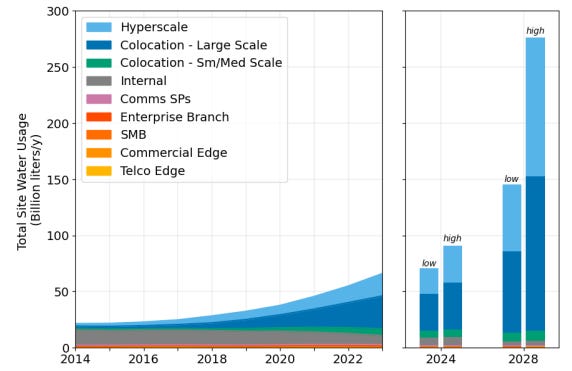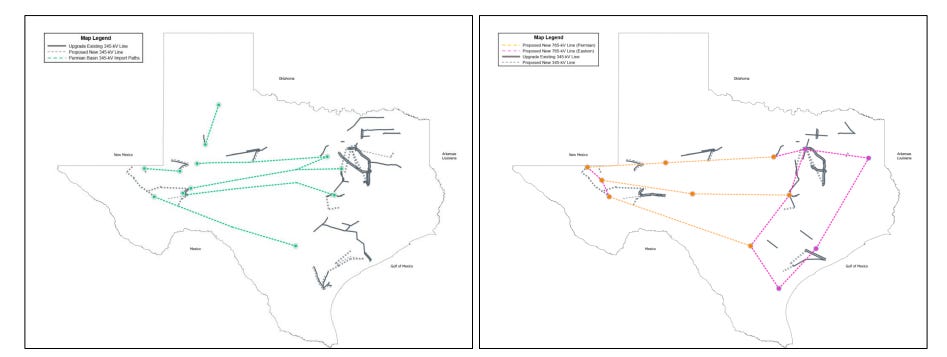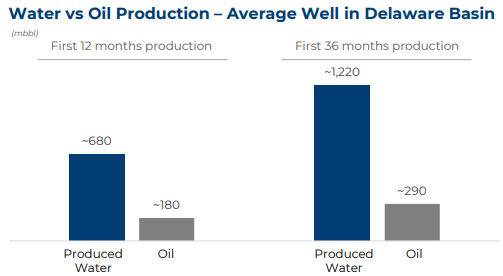Welcome to Episode 143 of Special Situation Investing.
A short thesis on Texas Pacific Land was posted on Value Investors Club last November. The author—going by the pseudonym “manny”—argued TPL, at its then price of $1365 per share, was in fact worth less than $600. As TPL is a large investment for both my cohost and I, the thesis was of immense interest to us. It also peaked the curiosity of more than a few of our readers and one asked for our thoughts on the issue. This piece is a response to that request and provides a brief update on TPL.
For those unfamiliar, Texas Pacific Land’s business consists largely of collecting royalty checks off nearly one million surface and mineral acres and a water business in West Texas. With only one hundred employees, it rakes in over $400 million in net income, boasting profit margins north of 65%. The company’s stock appreciated an incredible 26% per year since 1995.
While none dispute the success of its past, many doubt TPL’s ability to perform well in the future.
To be completely fair, manny’s eloquently written piece doesn’t call for TPL to go to zero, nor does it attempt a long-term prediction of stock performance. Instead it claims, at $1365, the stock was overvalued due to euphoria regarding hyped-up AI datacenter stories. It’s necessary to begin by congratulating the author on already being somewhat correct. In the months following the piece, TPL’s stock climbed 26% to $1730 but then fell 36% to $1096—temporarily down a maximum of 20%. TPL’s share price has since erased those loses, but if anyone used the drop to take profits on shorts, then congratulations. Or perhaps another chance will arrive. In fact, I hope manny is precisely correct and TPL crashes to $600. I’d buy as much as possible because I believe TPL’s future is bright.
To set the stage, here’s how manny summarizes the short thesis:
[TPL] is worth at most $10bn (<$600/share), and the current "[AI data center] themes" will be easily disproved over the near-term. Index buying is in the rearview…and once these realities are realized, there will be urgency by Horizon Kinetics' "followers"/clients to hit the exit, given the game theory and ownership concentration after this massive run-up.
In short, manny believes Horizon Kinetics and others are leveraging AI data center hype and index flows to exit the stock, that West Texas will not be the home of data centers, and that TPL can be accurately valued via discounted cashflows assuming a depleting nature of its oil, gas and water assets. I will discuss these three points in turn.
1. Pump and dump
In the piece, manny somewhat confusingly expresses respect for Murray Stahl and Horizon Kinetics and later suggests they are selling TPL while hyping up the stock. That latter part doesn’t sound like the Horizon Kinetics guys I know. For the past five years, I’ve consumed every bit of their content I could get my hands on and met with them in person. While it’s unnecessary for a nobody such as myself to defend Murray and his team, I have only ever seen them do exactly what they say and say exactly what they are doing. So when Murray says he recently bought, not sold, TPL shares, I believe him. When he claims any selling by Horizon Kinetics is for technical reasons such as in the inflation beneficiaries ETF, at the request of clients or due to fund withdrawals, I also believe him. Additionally, disclosures from entities controlled by Horizon Kinetics, such as FRMO Corp, show an increase in TPL shares owned. Enough said.
2. Data center or no data center
In manny’s opinion, “there is no logic in putting data centers anywhere near [the Permian Basin].” While I believe the opposite, picking apart manny’s argument seems a bit unfair because so many positive developments were announced since November. Instead of doing that, here’s a run-down of some recent positive content.
In our previous piece, Camping out in the Permian, I shared a claim by Doomberg that data centers, and the power plants that support them, will go off grid. The green chicken doubled down in a recent interview on the ROI Club Podcast. Here’s what he said:
So you will have isolated pods where natural gas goes in one side and data comes out the other, and no connectivity to the grid whatsoever. And there’s so much natural gas, you could do this in the Permian.
Later he spoke about water in the basin specifically:
No, we don't see [water for cooling data centers] as a significant constraint, because there's mountains or oceans of produced water that is coming up with oil and gas, particularly in the Permian, and some clever chemist and engineer will figure out a way to make use of that for cooling purposes.
Doomberg isn’t the only one making such claims either. No less than the President of the United States recently made a similar statement. In a very Trumpian manner, the President made the following remark to the World Economic Forum in Davos:
And I think it was largely my idea, because nobody thought this was possible. It wasn't that they were not smart, because they're the smartest, but I told them that what I want you to do is build your electric-generating plant right next to your [data center], as a separate building, connect it. And they said, Wow, you're kidding. And I said, no, no, I'm not kidding. You don't have to hook into the grid.
If I had to guess, I’d say Trump is a Doomberg subscriber. But I digress.
Not more than a week after that statement, Trump announced a $500 billion investment by Softbank, Open AI and Oracle toward building data centers in the United States. The initial investment is for $100 billion, with the first data center being built in Abilene, Texas. Now Abilene isn’t in the Permian Basin, nor is it on TPL’s property, but it is close, and could tangentially benefit the cashflows of the company.
More encouraging news came in the form of Chevron announcing a partnership to build behind-the-meter power solutions for data centers. Here’s a sampling from its press release:
Engine No. 1 and Chevron U.S.A. Inc. announced today the formation of a partnership to build a new company to develop scalable, reliable power solutions for United States (U.S.) based data centers running on U.S. natural gas…The joint development, in conjunction with GE Vernova, aims to establish the first multi gigawatt-scale co-located power plant and data center….The projects are expected to serve co-located data centers in the U.S. Southeast, Midwest and West regions. Power generation is not designed to flow initially through the existing transmission grid, reducing the risk of increasing electricity prices for consumers…The joint development plans to deliver up to four GW, the equivalent of powering 3-3.5 million U.S. homes, with initial in-service targeted by the end of 2027 and potential for project expansion beyond this capacity.
Multi-gigawatt data centers with associated power plants will take up massive amounts of space. Where is there more unencumbered land than West Texas? It seems likely that this fact will not be lost on Chevron since they are one of the biggest players in the Texas oil fields.
I could go on with more positive developments but I’ll cap it there. In my view, the probability of data centers being built directly in the Permian Basin, and as a result, on TPL’s land, is increasing by the day. That said, with or without data centers, I believe the company has the makings of a strong, long-term investment.
3. Overvalued or exceptional
The following statement from manny’s piece made me chuckle:
In reviewing the [Value Investors Club] archives, I just realized that all of the other TPL reviews have been negative in nature, going back 20 years (these theses did not age well), however I believe now is finally the time this will be a highly profitable endeavor.
As I said earlier, TPL already experienced a drop and could drop more for all I know. I highlight this admission by manny simply to underline how often investors bet against TPL. In fact, one could make a case that the first TPL short sellers were its original trustees since, for most of it’s existence, the majority of TPL’s revenue came from selling its original 3.5 million acre portfolio down to it current approximately one million acres.
The reason for this perennially negative view is twofold. First, TPL often looks expensive using common valuation techniques such as PE ratios. Secondly, and the reason for the first, is investors’ inability to predict all of the possible and higher-value uses for TPL’s land.
Here’s a few examples. When its land was only used for grazing cattle it was hard to predict the value that would be unlocked by vertically drilled oil wells, harder still the exponential increase from fracking and horizontal drilling. Who knew that both source and produced water would proved so lucrative? What visionary was there who, even a few decades ago, thought gigawatt data centers could take the place of cattle in West Texas?
TPL’s business, based on the simple ownership of land and renting its use and resources to other companies, is a low risk call option on the ingenuity of humans and the their ability to utilize nature’s resources to increase their standard of living. This is the key issue most investors either fail to see or are uncomfortable betting on.
Use of TPL’s land has reached heights of utility far above its original state and there is still room for more. Here’s a sampling of where I see further growth for TPL.
Normalizing Natural Gas Prices
It’s no secret that U.S. natural gas, represented by Henry Hub and Waha Hub prices, suffers from an over supply and a lack of pipeline and export capacity. In 2024, the average Waha price was negative and Henry Hub had a two dollar handle for most of the year. Both are far below international prices. I won’t belabor this point as more informed people have covered this topic extensively. Check out Bison Interest’s pieces here and here for an examples.
The result is that the price TPL realizes on natural gas is very low as shown in table below pulled from the company’s latest 10Q.
I believe this anomaly will be arbitrage away through increased pipeline capacity and in-basin usage, such as new natural gas power plants, and TPL will benefit as a result of others’ expenditures.
Increases in Easements and Other Surface-Related Income
With its extensive land ownership, TPL will likely experience an increase in revenue from easements and leases as more pipelines and power plants are built in the Permian Basin. At no cost to itself, TPL stands to benefit from any infrastructure built across its acreage. One example, is high tension wires that are in the process of being approved by the Public Utility Commission of Texas based on the findings of the recent Permian Basin Reliability Plan Study. Two images below show the projected paths of these powerlines crossing TPL’s land.
Growing Water Revenues
Water in the desert of West Texas is big business. Charts from TPL’s investor presentation show its water business has consistently grown since 2017. Both the average volume of water used to complete a well and the amount of water produced by Permian wells is increasing over time which is good news for the future of TPL’s source and produced water segments.
This third chart shows the ratio of water vs oil produced out of a Delaware Basin well over time. One will find that on average, a well produces about 3.5x as much water as oil in its first year and about 4.5x as much water in its first three years. Wells apparently get more watery as they age.
Since wells require more water and produce more water over time and, reportedly, deeper wells output more water than shallower wells, I expect TPL to benefit from a growing water business for the foreseeable future.
Data Center Cash Flow
Last but not least, there’s the potential for revenues from data center campuses built on TPL’s land. I said campuses to emphasis that, if the thesis plays out, a data center could bring land lease royalties, royalties from pipeline and power line infrastructure, increases in water and natural gas production and use, as well as royalties from power plant/green energy power infrastructure.
Data centers are being built at a scale never seen before and will consume unprecedented amounts of resources. A report by Berkeley Labs in conjunction with the U.S. Department of Energy titled 2024 United States Data Center Energy Usage Report was enlightening in this regard. Below are three charts from the report.
The first estimates data centers in 2028 will consume roughly between 2x and 3x more electricity that they did in 2024.

This second chart shows data center water consumption is also predicted to rise drastically over the same timeframe.

To get an idea what type of annual cash flow a single 1GW datacenter could send TPL’s way, take a look at the table from Horizon Kinetics’ latest quarterly call. It suggests a single 1GW datacenter could bring in over $40 million of cash flow each year at little to no cost to TPL.
Conclusion
In concluding this piece, I just want to thank manny for sharing his or her opinion on Texas Pacific Land. It was good to for me to read an opposing view on one of my favorite ideas. Please check out manny’s piece for yourself and come to your own conclusions. As for myself, I remain convinced that over the long term a short thesis on TPL will not age well.
With that, I hope everyone found this write-up useful and we’ll be back in two weeks with yet another edition of Special Situation Investing. Thanks for reading and listening.
















Share this post